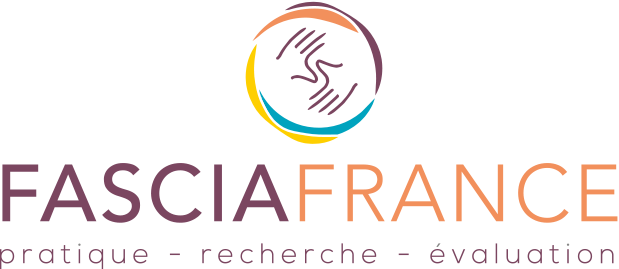Dupuis C. PT, Msc, Courraud C. PT, Phd – CERAP, Universidad Fernando Pessoa, Porto, Portugal
Conférence Plénière – Session Interventions Physiques – 5ème Congrès international ICEPS – 18 au 20 mai 2017 – Montpellier, France
Abstract :
- Rationale
Pain is a complex phenomenon[1] which, when it becomes chronic, affects the whole person.
Fibromyalgia is a poorly explained chronic pain condition, frequently associated with diffuse pain, central nervous system amplification of pain, fatigue, memory problems, and/or sleep and mood disturbances[2].
Fascia is a sensitive organ[3] which has a nociception linked closely to affective pain[4]. The implication of fascia in fibromyalgia has regularly been evoked by researchers[5, 6, 7].
- Method
This study used a combination of qualitative and quantitative approaches, to evaluate the effect of DBM Fasciatherapy (which is a type of manual therapy), on the pain experienced by seven fibromyalgia patients.
All seven patients’ experienced pain intensity was rated on a Visual Analogic Scale (VAS), a commonly used method for pain measurement[8].They all assessed their pain, before, just after, one hour after, and one day after, the treatment session. These data were analysed statistically so as to discover whether DBM Fasciatherapy had any effect on the intensity of pain experienced by these patients.
A sub-group of patients who reported no reduction in the intensity of pain they experienced following DBM treatment were subsequently interviewed, in order to discover whether their DBM treatment might have helped relieve any of their symptoms. These semi-structured interviews were conducted with the aid of a grid focused on three dimensions of pain and five issues linked to pain (sleep, fatigue, behavior, cognition, and social). The interview data were thematically examined with the intention of finding out whether these patients felt their DBM treatment may have helped them feel better in other ways.
- Results
Three (out of seven) patients reported that their DBM Fasciatherapy treatment helped reduce the intensity of the pain they were experiencing. The other four participants said their treatment did not measurably affect to their experienced pain level, yet interview data suggests their treatment may have helped them feel more physically and mentally relaxed.
- Discussion
The two approaches gave different outcomes. Some where specific to each approach, others where common, and others where divergent. Each type allowed to better understand the effects, or to question differently these effects (specially when the outcomes where divergent).
- Conclusion
This study was enriched by using a combination of quantitative AND qualitative research methods, rather than using either method (quantitative OR qualitative) on its own. Future evaluation of the effectiveness of fascia-relating manual therapies might possibly benefit from using mixed, rather than single, research methods.
Keywords: mixed methodology, DBM fasciatherapy, manual therapy, fibromyalgia
Lien vers les actes du congres

